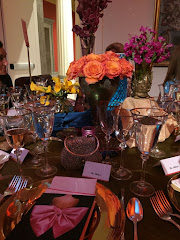A few American Flag Code rules include:
- "The flag should be lighted at all times, either by sunlight or by an appropriate light source."
- "The flag should be flown in fair weather, unless the flag is designed for inclement weather use."
- The flag should never be dipped to any person or thing. It is flown upside down only as a distress signal."
- "The flag should never be used for any advertising purposes. It should not be embroidered, printed or otherwise impressed on such articles as cushions, handkerchiefs, napkins, boxes, or anything intended to be discarded after temporary use. Advertising signs should not be attached to the staff or halyard. "
- "The flag should not be used for any decoration in general. Bunting of blue, white and red stripes is available for these purposes. The blue stripe of the bunting should be on the top."
- "The flag should never have placed upon it, nor on any part of it, nor attached to it, any mark, insignia, letter, word, figure, design, picture or drawing of any nature."
- The flag should never be used for receiving, holding, carrying, or delivering anything.
- The flag should never be used as part of a costume or athletic uniform, except that a flag patch may be used on the uniform of military personnel, fireman, policeman, and members of patriotic organizations.
Some examples are:
- Ralph Lauren 1984 Fall Ready-to-Wear collection shows his now iconic flag sweater.
- Super Bowl 2004: Kid Rock wore a flag poncho.
- July 2003: President Bush autographed a small flag.
- 9-11-2003: President and Mrs. Bush stood on a flag carpet at a Ground Zero ceremony.
- June 10 in Albania: a man in the crowd watching a parade wears flag shorts.
- Reno, Nevada, 10-2-2007: The Mexican flag was placed above the American flag on a flagpole at a local bar.
- January 19, 2009: newly inaugurated President Obama makes available to citizens flags with his image and name overprinted onto the flag.
- May 31, 2011: MSNBC properly reports a painted flag on the side of Sarah Palin's campaign bus. There is a long unchallenged tradition of politicians using the American flag for campaigning purposes, but it is still against the flag code.
- March 2012: Democratic headquarters, Lake County, Florida: A flag depicting President Obama's face in the blue field in place of the stars, was removed in response from complaints from local veterans.
What are your thoughts about this use of our American flag? Is it pushing the sticky part of the edge of the envelope?
"No disrespect should be shown to the flag of the United States of America."
"The flag represents a living country and is itself considered a living thing."
Flag Code information gathered from: www.ushistory.org/flag
www.usa-flag-site.org
click on 'American Flag Etiquette' link









